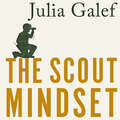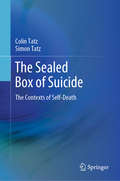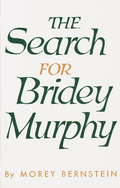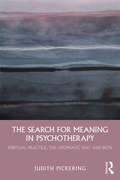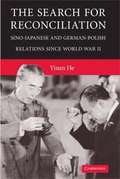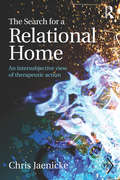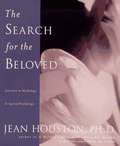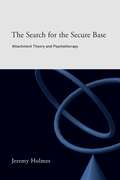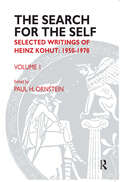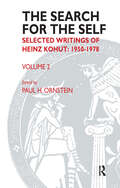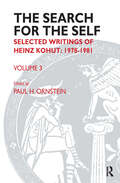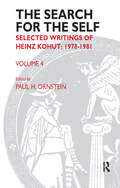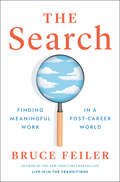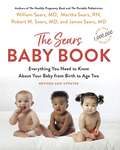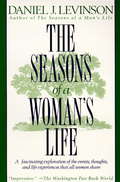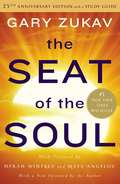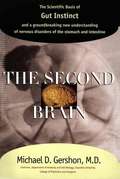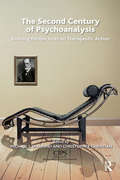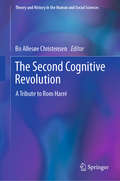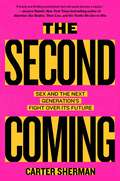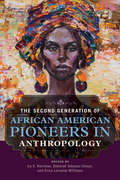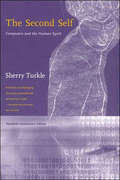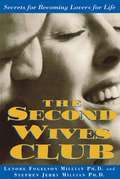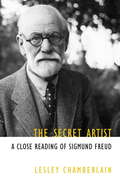- Table View
- List View
The Scout Mindset: Why Some People See Things Clearly and Others Don't
by Julia GalefWinner of best smart thinking book 2022 (Business Book Awards)Guardian best books of 2021'Original, thought-provoking and a joy to read' Tim Harford'Highly recommended. It's not easy to become (more of) a scout, but it's hard not to be inspired by this book' Rutger BregmanWhen it comes to what we believe, humans see what they want to see. In other words, we have what Julia Galef calls a 'soldier' mindset. From tribalism and wishful thinking, to rationalising in our personal lives and everything in between, we are driven to defend the ideas we most want to believe - and shoot down those we don't.But if we want to get things right more often we should train ourselves to think more like a scout. Unlike the soldier, a scout's goal isn't to defend one side over the other. It's to go out, survey the territory, and come back with as accurate a map as possible. Regardless of what they hope to be the case, above all, the scout wants to know what's actually true.In The Scout Mindset, Galef shows that what makes scouts better at getting things right isn't that they're smarter or more knowledgeable than everyone else. It's a handful of emotional skills, habits, and ways of looking at the world - which anyone can learn. With fascinating examples ranging from how to survive being stranded in the middle of the ocean, to how Jeff Bezos avoids overconfidence, to how superforecasters outperform CIA operatives, to Reddit threads and modern partisan politics, Galef explores why our brains deceive us and what we can do to change the way we think.'With insights that are both sharp and actionable, The Scout Mindset picks up where Predictably Irrational left off. Reading it will teach you to think more clearly, see yourself more accurately, and be wrong a little less often' Adam Grant
The Sealed Box of Suicide: The Contexts of Self-Death
by Colin Tatz Simon TatzThis unique book explores suicide as more than just a manner of death. It challenges the myths, beliefs, dogma, and customs of suicide from the earliest theories. It offers fresh insights into dark spaces. World-wide, suicide deaths are three times greater than homicides, and are increasing. Current approaches to stem this ‘epidemic’ are not working, or have very limited success. Mental health interventions, theories about a suicide or a depression gene, and the ever-increasing dispensing of antidepressants have not lessened the stark statistics. The authors attempt to understand the soul of the suicide — addressing the social, economic, political, historical, geographic, and cultural contexts in which suicide occurs. The social order is indelibly connected to settings, places, circumstances, relationships, occupations, climate, and milieus. Most of the 36 diverse categories of self-motivated deaths defy a ‘one-size-fits-all’ approach. Recognising contexts and looking outside the confines that have imprisoned thinking about suicide, could well be more effective in alleviating or mitigating suicide than years searching for a possible vaccination against such death.The book is an appeal to move beyond the medical model of suicide. Written in a very accessible style, it is of interest to social scientists, philosophers, professionals and researchers in public health, medical and behavioural sciences, and lay persons alike.A critical, stimulating and moral tale of suicide that provides a new look -–Michael J. Kral, PhD, School of Social Work, Wayne State University, Michigan, USA … a major breakthrough and a step in the right direction in addressing the problem of suicide-–Said Shahtahmasebi, PhD, Research Director, the Good Life Research Centre Trust, Christchurch, New Zealand … informed understanding of suicide’s multiplicity and historical instability – Jennifer White, PhD, School of Youth and Child Care, University of Victoria, British Columbia, Canada
The Search for Bridey Murphy
by Morey BernsteinThe story of Ruth Simmons, who while under hypnosis recants the story of the life of Bridey Murphy under the care of one of the leading hypnotherapist of the day.
The Search for Meaning in Psychotherapy: Spiritual Practice, the Apophatic Way and Bion
by Judith Pickering2020 American Board & Academy of Psychoanalysis (ABAPsa) book award winner! If, when a patient enters therapy, there is an underlying yearning to discover a deeper sense of meaning or purpose, how might a therapist rise to such a challenge? As both Carl Jung and Wilfred Bion observed, the patient may be seeking something that has a spiritual as well as psychotherapeutic dimension. Presented in two parts, The Search for Meaning in Psychotherapy is a profound inquiry into the contemplative, mystical and apophatic dimensions of psychoanalysis. What are some of the qualities that may inspire processes of growth, healing and transformation in a patient? Part One, The Listening Cure: Psychotherapy as Spiritual Practice, considers the confluence between psychotherapy, spirituality, mysticism, meditation and contemplation. The book explores qualities such as presence, awareness, attention, mindfulness, calm abiding, reverie, patience, compassion, insight and wisdom, as well as showing how they may be enhanced by meditative and spiritual practice. Part Two, A Ray of Divine Darkness: Psychotherapy and the Apophatic Way, explores the relevance of apophatic mysticism to psychoanalysis, particularly showing its inspiration through the work of Wilfred Bion. Paradoxically using language to unsay itself, the apophatic points towards absolute reality as ineffable and unnameable. So too, Bion observed, psychoanalysis requires the ability to dwell in mystery awaiting intimations of ultimate truth, O, which cannot be known, only realised. Pickering reflects on the works of key apophatic mystics including Dionysius, Meister Eckhart and St John of the Cross; Buddhist teachings on meditation; Śūnyatā and Dzogchen; and Lévinas’ ethics of alterity. The Search for Meaning in Psychotherapy will be of great interest to both trainees and accomplished practitioners in psychoanalysis, analytical psychology, psychotherapy and counselling, as well as scholars of religious studies, those in religious orders, spiritual directors, priests and meditation teachers.
The Search for Reconciliation
by Yinan HeWhy have some former enemy countries established durable peace while others remain mired in animosity? When and how does historical memory matter in post-conflict interstate relations? Focusing on two case studies, Yinan He argues that the key to interstate reconciliation is the harmonization of national memories. Conversely, memory divergence resulting from national mythmaking harms long-term prospects for reconciliation. After WWII, Sino-Japanese and West German-Polish relations were both antagonized by the Cold War structure, and pernicious myths prevailed in national collective memory. In the 1970s, China and Japan brushed aside historical legacy for immediate diplomatic normalization. But the progress of reconciliation was soon impeded from the 1980s by elite mythmaking practices that stressed historical animosities. In contrast, from the 1970s West Germany and Poland began to de-mythify war history and narrowed their memory gap through restitution measures and textbook cooperation, paving the way for significant progress toward reconciliation after the Cold War.
The Search for Why: A Revolutionary New Model for Understanding Others, Improving Communication, and Healing Division
by Bob RaleighA groundbreaking new behavioral model that explains what drives us, and why.From tireless marketers to pandering politicians, the forces of modernity have lulled us into lazy categorizations of people, erasing the natural nuances of being human. We are all now accustomed to being reduced to a demographic—man, woman, black, white, old, young. But while these factors may inform our lived experience, what if there is something more fundamentally important that determines our behavior? Bob Raleigh, founder of PathSight Predictive Science, argues that biological instincts are the most foundational determinants of our behavior. PathSight has pioneered a new model that draws on the latest findings in neuroscience, data science, and behavioral science to classify people in five distinct groups, depending on what they instinctively care about most: nurturing, fairness, loyalty, authority, or purity. Their data, drawn from large-scale studies with over 50,000 participants, show that people who share the same instinctual patterns will engage the world in extremely predictable ways, regardless of age, gender, ethnicity, lifestyle, income, and education. Knowing the impact that instinct has on behavior has all kinds of advantages. You can tailor any communication to make it maximally effective for a particular audience. You can strive to empathize with a person you&’ve always found mystifying. And of course, understanding what truly makes you tick is an invaluable step on your journey to self-discovery. In The Search for Why, Bob Raleigh offers the missing link that all the big data in the world can&’t deliver.
The Search for a Relational Home: An intersubjective view of therapeutic action (Psychoanalytic Inquiry Book Series)
by Chris JaenickeIn The Search for a Relational Home, Chris Jaenicke gives the reader an inside view of what actually happens in psychotherapy and how change occurs. He describes how both participants – the patient and the therapist – feel, and how they affect each other. The reader is encouraged to vicariously partake in the process from the perspective of his or her own life experiences. The book describes the nature of therapeutic action through a radicalized version of intersubjective systems theory. It demonstrates how psychotherapy is an outcome of a highly personal encounter between two unique human beings, and how, while the goal of psychoanalysis is to help the patient, this can only be achieved inasmuch as both participants are willing to undergo transformation. Jaenicke clarifies how both successes and failures as well as personal strengths and weaknesses play a constitutive part in the psychotherapeutic process. The Search for a Relational Home also provides theoretical and practical guidelines for supervision. Jaenicke presents here a unique approach to the process of psychotherapy which will be vital reading for psychoanalysts, psychotherapists and those in training as well as students in all fields of mental health.
The Search for the Beloved: Journeys in Mythology and Sacred Psychology
by Jean HoustonIt's one of the most important books written on the creative and inventive mind, explains the theories that helped form the foundation of the human potential movement. In what has been called “an intellectual and spiritual feast.
The Search for the Secure Base: Attachment Theory and Psychotherapy
by Jeremy HolmesIn recent decades, attachment theory has gained widespread interest and acceptance, although the relevance of attachment theory to clinical practice has never been clear. The Search for the Secure Base shows how attachment theory can be used therapeutically. Jeremy Holmes introduces an exciting new attachment paradigm in psychotherapy with adults, describing the principles and practice of attachment-informed therapy in a way that will be useful to beginners and experienced therapists alike. Illustrated with a wide range of clinical examples, this book will be welcomed by practitioners and trainees in psychotherapy, psychoanalysis and in many other disciplines.
The Search for the Self: Selected Writings of Heinz Kohut 1950-1978 (Search for the Self)
by Heinz Kohut'The re-issuing of the four volumes of the author's writings is a major publishing event for psychoanalysts who are interested in both the theoretical and the therapeutic aspects of psychoanalysis. These volumes contain the author's pre-self psychology essays as well as those he wrote in order to continue to expand on his groundbreaking ideas, which he presented in The Analysis of the Self; the Restoration of the Self; and in How Does Analysis Cure? These volumes of The Search for the Self permit the reader to understand not only the above three basic texts of psychoanalytic self psychology more profoundly, but also to appreciate the author's sustained openness to further changes - to dare to present his self psychology as in continued flux, influenced by newly emerging empirical data of actual clinical practice. The current re-issue of the four volumes of The Search for the Self would assure that the younger generation of psychoanalysts would be exposed to a clinical theory that could contribute greatly to solving the therapeutic dilemmas facing psychoanalysis today'. This is Volume one.
The Search for the Self: Selected Writings of Heinz Kohut 1978-1981 (Search for the Self)
by Heinz Kohut'The re-issuing of the four volumes of the author's writings is a major publishing event for psychoanalysts who are interested in both the theoretical and the therapeutic aspects of psychoanalysis. These volumes contain the author's pre-self psychology essays as well as those he wrote in order to continue to expand on his groundbreaking ideas, which he presented in The Analysis of the Self; the Restoration of the Self; and in How Does Analysis Cure? These volumes of The Search for the Self permit the reader to understand not only the above three basic texts of psychoanalytic self psychology more profoundly, but also to appreciate the author's sustained openness to further changes - to dare to present his self psychology as in continued flux, influenced by newly emerging empirical data of actual clinical practice.The current re-issue of the four volumes of The Search for the Self would assure that the younger generation of psychoanalysts would be exposed to a clinical theory that could contribute greatly to solving the therapeutic dilemmas facing psychoanalysis today'
The Search for the Self: Selected Writings of Heinz Kohut 1978-1981 (Search for the Self)
by Heinz Kohut'The re-issuing of the four volumes of the author's writings is a major publishing event for psychoanalysts who are interested in both the theoretical and the therapeutic aspects of psychoanalysis. These volumes contain the author's pre-self psychology essays as well as those he wrote in order to continue to expand on his groundbreaking ideas, which he presented in The Analysis of the Self; the Restoration of the Self; and in How Does Analysis Cure?These volumes of The Search for the Self permit the reader to understand not only the above three basic texts of psychoanalytic self psychology more profoundly, but also to appreciate the author's sustained openness to further changes - to dare to present his self psychology as in continued flux, influenced by newly emerging empirical data of actual clinical practice. The current re-issue of the four volumes of The Search for the Self would assure that the younger generation of psychoanalysts would be exposed to a clinical theory that could contribute greatly to solving the therapeutic dilemmas facing psychoanalysis today'
The Search for the Self: Selected Writings of Heinz Kohut 1978-1981 (Search for the Self)
by Heinz KohutThe re-issuing of the four volumes of the author's writings is a major publishing event for psychoanalysts who are interested in both the theoretical and the therapeutic aspects of psychoanalysis. These volumes contain the author's pre-self psychology essays as well as those he wrote in order to continue to expand on his groundbreaking ideas, which he presented in The Analysis of the Self; the Restoration of the Self; and in How Does Analysis Cure? These volumes of The Search for the Self permit the reader to understand not only the above three basic texts of psychoanalytic self psychology more profoundly, but also to appreciate Kohut's sustained openness to further changes - to dare to present his self psychology as in continued flux, influenced by newly emerging empirical data of actual clinical practice. The current re-issue of the four volumes of The Search for the Self would assure that the younger generation of psychoanalysts would be exposed to a clinical theory that could contribute greatly to solving the therapeutic dilemmas facing psychoanalysis today. This is volume four.
The Search: Finding Meaningful Work in a Post-Career World
by Bruce FeilerFind work you love. On your own terms. From the New York Times bestselling author of Life Is in the Transitions comes a bold new road map for finding meaning and purpose in what you do, based on insights drawn from hundreds of life stories of Americans of all backgrounds. America is at a once-in-a-generation turning point around work: unprecedented numbers are quitting their jobs, rethinking their routines, breaking away from stifling expectations. The most suffocating iron cage of all is the idea that each of us must follow a linear career—lock into a dream early, always climb higher, never stop until you reach the top. Few ideas have squandered more human potential. Employing his signature, immersive approach, Bruce Feiler is known for taking complex challenges and converting them into actionable steps that can help each of us live with more fulfillment and joy. From thousands of hours of interviews, Feiler has distilled a powerful new vision of work: The people who are happiest don&’t chase someone else&’s dreams; they chase their own. Freed from outdated scripts, they identify what brings them meaning and write their own story of success. The Search introduces an all-new toolkit for achieving that goal, 21 Questions to Find Work You Love. Practical and empowering, these questions will help you unearth the story of work you&’ve been trying to tell your whole life—then go achieve it. You&’ll discover: · The upsides and downsides of work you learned from your parents; · Why your childhood role model offers the best clue to what you should do now; · Who is your waymaker; · When to leave a job and when to stay; · What is your purpose right now; …and much more. From a master storyteller who&’s helped millions transform their lives for better, The Search arrives as the world reimagines the basic assumptions of work and offers a timely, urgent playbook for each of us to get the happiness we seek, the meaning we crave, and the success we deserve.
The Sears Baby Book: Everything You Need to Know About Your Baby from Birth to Age Two
by William Sears Martha Sears Robert W. Sears James SearsRevised and expanded: America's bestselling "baby bible" –– an encyclopedic guide to the first two years of your baby's life. The million-copy bestseller by &“the man who remade motherhood&” (TIME) has now been revised, expanded, and bought thoroughly up-to-date — with the latest information on prenatal vitamins, breastfeeding practices, daycare, midwifery, hospital births, preventing and overcoming postpartum depression, and infant development. The Searses draw from their vast experience both as medical professionals and parents to provide comprehensive information on virtually every aspect of infant care. The Sears Baby Book focuses on the essential needs of babies — eating, sleeping, development, health, and comfort — as it addresses the questions of greatest concern to today's parents. The topics covered include:Preparing for a safe and healthy birthBonding with your babyFeeding your baby Soothing your fussy babyGetting your baby to sleepUnderstanding your baby&’s developmentTreating common illnessesBabyproofing your homeUnderstanding toddler behaviorDealing with temper tantrumsToilet trainingWorking parentingFirst-aid proceduresand much moreUnrivaled in its scope and authority, The Sears Baby Book presents a practical, contemporary approach to parenting that reflects the way we live today. This is a rich and invaluable resource offering the basic guidance and inspiration you need to get the most out of parenting — for your child, yourself, and for your entire family.
The Seasons of a Woman's Life
by Daniel J. LevinsonFirmly grounded in scientific research, this book reveals that women follow a predictable developmental course through adulthood. Work and marriage relationships, personal crisis, emotional states, and behavior can all be related to this grand pattern. But in the case of women, the situation is made far more complicated by gender biases.From the Hardcover edition.
The Seat of the Soul: An Inspiring Vision Of Humanity's Spiritual Destiny
by Gary ZukavThe twenty-fifth anniversary of this beloved bestseller is celebrated in Prefaces by Oprah Winfrey and Maya Angelou and contains a new Foreword by the author, website links, and a new Study Guide to help readers find even deeper meaning and fulfillment.The Seat of the Soul encourages you become the authority in your own life. It will change the way you see the world, interact with other people, and understand your own actions and motivations. Beginning with evolution, Gary Zukav takes you on a penetrating exploration of the new phase humanity has entered: we are evolving from a species that understands power as the ability to manipulate and control--external power--into a species that understands power as the alignment of the personality with the soul--authentic power. Our evolution requires each of us to make the values of the soul our own: harmony, cooperation, sharing, and reverence for Life. Using his scientist's eye and philosopher's heart, Zukav shows us how to participate fully in this evolution, enlivening our everyday activities and all of our relationships with meaning and purpose. The Seat of the Soul has sold millions of copies around the globe, and as it changes lives, more and more people begin to live by the values of the spirit. Indeed, a new world is emerging, and this book brings its message to you.
The Second Brain
by Michael D. GershonThis book explains, in readable terms, what scientists now know about how the autonomic and the enteric nervous systems interact, what functions they perform, what causes such problems as ulcers and irritable bowel syndrome, and how scientists arrived at this knowledge.
The Second Century of Psychoanalysis: Evolving Perspectives on Therapeutic Action (CIPS (Confederation of Independent Psychoanalytic Societies) Boundaries of Psychoanalysis)
by Christopher Christian Michael J. DiamondThis book explores the internal and external boundaries of psychoanalysis. It examines the interrelationships between various psychoanalytic theoretical and clinical perspectives as well as between psychoanalysis and other disciplines.
The Second Cognitive Revolution: A Tribute to Rom Harré (Theory and History in the Human and Social Sciences)
by Bo Allesøe ChristensenRom Harré’s career spans more than 40 years of original contributions to the development of both psychology and other human and social sciences. Recognized as a founder of modern social psychology, he developed the microsociological approach ‘ethogenics’ and facilitated the discursive turn within psychology, as well as developed the concept of positioning theory. Used within both philosophy and social scientific approaches aimed at conflict analysis, analyses of power relations, and narrative structures, the development and impact of positioning theory can be understood as part of a second cognitive revolution. Whereas the first cognitive revolution involved incorporating cognition as both thoughts and feelings as an ineliminable part of psychology and social sciences, this second revolution released this cognition from a focus on individuals, and towards a focus of understanding individuals as participating in public practices using public discourses as part of their cognition. This edited volume adds to the scholarly conversation around positioning theory, evaluates Rom Harré’s significance for the history and development of psychology, and highlights his numerous theoretical contributions and their lasting effects on the psychological and social sciences.Included among the chapters:What is it to be a human being? Rom Harré on self and identityThe social philosophy of Harré as a philosophy of cultureThe discursive ontology of the social worldEthics in socio-cultural psychologiesDiscursive cognition and neural networksThe Second Cognitive Revolution: A Tribute to Rom Harré is an indispensable reader for anyone interested in his cognitive-historical turn, and finds an audience with academics and researchers in the social and human science fields of cognitive psychology, social psychology, discursive psychology, philosophy, sociology, and ethnomethodology.
The Second Coming: Sex and the Next Generation's Fight Over Its Future
by Carter ShermanEqual parts investigative reporting and cultural criticism, this is a look at the sex lives of young adults in post-Roe v. Wade, post-#MeToo America—and how the challenges they face are harbingers of what&’s coming for the rest of us.As a college student, award-winning journalist Carter Sherman, along with several members of her sorority, was interviewed by a writer looking for salacious details about their sex lives. But the sex the girls were having—or the lack thereof—seemed disappointing, and their stories didn&’t make the book&’s final cut. A decade later, young Americans are having less sex than past generations, and the sex they are having is infinitely more complicated. Sherman, who has spent years traveling the country reporting on gender and sexuality, wanted to find out why. Based on more than one hundred interviews with teenagers and young adults, activists, and experts, The Second Coming reveals how (mis)education, the internet, and politics have not only reshaped relationships but also unleashed a nationwide power struggle over the future of sex. From abortion clinics crowded with young patients, to &“Dating with Dignity&” seminars at the National Pro-Life Summit, to school board battles over what students should read, think, and feel, we meet folks from both sides of the aisle who are well-informed, empowered, and active (even if not always sexually). And as measures are taken to limit Americans&’ access to rights and resources, they are fighting back. In the tradition of Rebecca Traister and Lisa Taddeo, The Second Coming explores how the ballot box has infiltrated the bedroom, and the breaking point as a nation we&’ve reached as a result.
The Second Generation of African American Pioneers in Anthropology
by Erica Lorraine Williams Ira E. Harrison Deborah Johnson-SimonAfter the pioneers, the second generation of African American anthropologists trained in the late 1950s and 1960s. Expected to study their own or similar cultures, these scholars often focused on the African diaspora but in some cases they also ranged further afield both geographically and intellectually. Yet their work remains largely unknown to colleagues and students. This volume collects intellectual biographies of fifteen accomplished African American anthropologists of the era. The authors explore the scholars' diverse backgrounds and interests and look at their groundbreaking methodologies, ethnographies, and theories. They also place their subjects within their tumultuous times, when antiracism and anticolonialism transformed the field and the emergence of ideas around racial vindication brought forth new worldviews. Scholars profiled: George Clement Bond, Johnnetta B. Cole, James Lowell Gibbs Jr., Vera Mae Green, John Langston Gwaltney, Ira E. Harrison, Delmos Jones, Diane K. Lewis, Claudia Mitchell-Kernan, Oliver Osborne, Anselme Remy, William Alfred Shack, Audrey Smedley, Niara Sudarkasa, and Charles Preston Warren II
The Second Self, Twentieth Anniversary Edition: Computers and the Human Spirit (The\mit Press Ser.)
by Sherry TurkleA new edition of the classic primer in the psychology of computation, with a new introduction, a new epilogue, and extensive notes added to the original text.In The Second Self, Sherry Turkle looks at the computer not as a "tool," but as part of our social and psychological lives; she looks beyond how we use computer games and spreadsheets to explore how the computer affects our awareness of ourselves, of one another, and of our relationship with the world. "Technology," she writes, "catalyzes changes not only in what we do but in how we think." First published in 1984, The Second Self is still essential reading as a primer in the psychology of computation. This twentieth anniversary edition allows us to reconsider two decades of computer culture—to (re)experience what was and is most novel in our new media culture and to view our own contemporary relationship with technology with fresh eyes. Turkle frames this classic work with a new introduction, a new epilogue, and extensive notes added to the original text.Turkle talks to children, college students, engineers, AI scientists, hackers, and personal computer owners—people confronting machines that seem to think and at the same time suggest a new way for us to think—about human thought, emotion, memory, and understanding. Her interviews reveal that we experience computers as being on the border between inanimate and animate, as both an extension of the self and part of the external world. Their special place betwixt and between traditional categories is part of what makes them compelling and evocative. (In the introduction to this edition, Turkle quotes a PDA user as saying, "When my Palm crashed, it was like a death. I thought I had lost my mind.") Why we think of the workings of a machine in psychological terms—how this happens, and what it means for all of us—is the ever more timely subject of The Second Self.
The Second Wives' Club
by Lonore Millian Stephen MillianAre you or someone you know a second wife? Are you tired of arguing about your husband’s first marriage? The Second Wives’ Club is the book you’ve been waiting for. Join the Club and learn the six secrets of successful second marriages. Learn how you can have wedded bliss while avoiding the pitfalls that second marriages bring. Don’t be put off by his ex-wife. Help him get rid of his old “baggage” and make space in your relationship to be lovers for life.
The Secret Artist
by Lesley ChamberlainWidely acclaimed for giving "an understanding of the connection between Nietzsche's personal experience and his most famous ideas" (Christopher Lehmann-Haupt, New York Times) in her biography of Nietzsche, Nietzsche in Turin, Chamberlain now renders a similar service to readers of Freud. In this book, part biography, part literary criticism, she takes the reader into the mind of Freud, toward a better understanding of the thinker, his work, and art itself. The very idea of the subconcious as a constant, active presence in our daily lives was Freud's greatest contribution and has allowed generations of people to experience their lives more deeply. His rigorous exploration of the dynamism and structures of the subconscious, Chamberlain argues, was in itself an important work of art. Using Freud's own writing on art and the aesthetic theories of thinkers ranging from Nietzsche to Lionel Trilling, Chamberlain examines Freud's art and shows how his imaginative creations have revolutionized not only mental health, but our thinking about art in general, by opening up the individual subconscious as a subject. In elegant, accessible prose she describes how "Freud split the aesthetic atom, releasing a vast energy for individual creativity."
